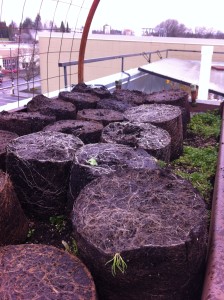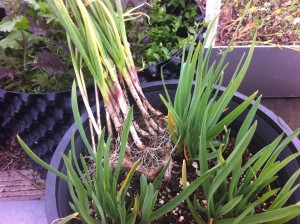[metaslider id=52]There are a few achievements in life that I remember with a satisfaction disproportionate to the actual mastery shown. Typing is one. I skipped typing class in high school, pecked my way with two fingers through my college thesis, then decided that I was never going to do that again. I sat at my parents’ kitchen table with my clacking electric machine and took the prompts of a thin exercise book, spelling out “Now is the time for all good men to come to the aid of their country,” and other such stuff. After a couple hours’ work a day for a week, I could type passably well, and I took a tremendous pride my mastery, learning perhaps sweetened by the discovery my earlier intuition was right: this didn’t require a whole semester-long course to become proficient!
Driving a stick shift delivered the same burst of joy and followed a similar pattern: little to no former training, gradual realization the skill needed to be learned, bucking bronco experimentation on some country back roads with no one watching, one near accident when I took my show to the city, and then there it was….I was a beaming stick shift driver. So no surprise that there would be moments like that in gardening. What is surprising to me is that my greatest joys are often not the grand tasks and projects that I have completed. It’s rather the little insights that have given the most satisfaction. Take garlic for example: First a primer. To the gardener, there are two basic types of garlic: hardneck and softneck. Hardneck poses no problem when considering its re-plantability. A head of hardneck is composed of 6 or so roughly equal-size cloves clustered around a woody stalk. All the cloves, being more or less similar, make good candidates for planting, so its a simple matter of de-skinning the outer part of the head, breaking apart the cloves, planting them, then discarding the central stalk.
A hardneck garlic reveals its simple, uncomplicated internal
structure: central stalk surrounded by six or so nice, fat cloves.
The other garlic, softneck, does cause problems for the planter. Its structure consists of an irregular array of cloves, many more than a hardneck head, but most of them are small, downright puny even, and rather unsuitable for planting. In garlic planting, the rule is: large cloves = large plants = large new heads (repeat formula from one growing season to the next, saving large cloves for planting). Hardneck frees the planter from making any decisions…the cloves are all large, so they all get planted. Softneck is more like life – complicated, requiring thought. At the outset there are some full-sized, beefy cloves, and those go straight in the ground as soon as they are popped off the head, but as one gets closer to the core, more uncertainty ensues, and by the time the center has been reached, the cloves are surely worthless as planters. Of course you can eat them, but the same problem inheres in the kitchen: the inner cloves are so small that the trouble of peeling them isn’t worth the garlicky yield.
Here is the complicated, irregular softneck with its
substantial outer cloves and pain-in-the-butt, little inner ones.
But what are problems if not invitations for insight and creativity. Last year, for some reason, I got to wondering what might happen if, after peeling off and planting the big, outer cloves, I planted the remaining small, inner core of a softneck as one unit, expecting not large, substantial stalks for production of head garlic, but thin, slender stalks that would make great green garlic, which is the immature, spring-harvested version that chefs covet. Green garlickers don’t wait for a head to form. They harvest the plants in the early spring and chop the green stalk, as one would a pencil-thin leek. Because the plant doesn’t need a lot of space to fill it, it’s perfectly reasonable to plant a bunch of cloves (like, say, a small, inner reject head) right close together, expecting to harvest them young, before they really start to compete with each other. One day last November I had just cut some peppers out of some plastic pots (#5 short….about 4 gal. capacity) and had dozens of soil-filled, pepper-stump-laden pots strewn all about. Having also just planted the fat, outer cloves of my softneck garlic, I had a paper bag full of the inner head “rejects” with me at the same time. Suddenly the heavens shuddered and rumbled and a bolt shot down, illuminating a solution: don’t dump out the pepper pots just yet….set the inner heads of garlic in them for green garlic in the spring.
This is what usually happens to the pepper pots at the end of
the season. Bottoms up! But fate intervened to prevent this step last year.
The garlic-triumph insight delays the dumping of the pepper pots.
The inner heads of softneck garlic produce nice, pre-bunched green garlic.
In my career as a grower I have labored hard and mightily in the fields, I have achieved organizational successes, I have blazed trails into new areas of gardening, but I think this little trick with garlic, solving the problem of the useless inner heads and creating a double, multi-season rotation in the pepper pots, may be one of the gardening achievements I take most pride in.


![IMG_8956[1]](http://www.urban-ag-solutions.com/wp-content/uploads/2015/03/IMG_89561-300x224.jpg)
